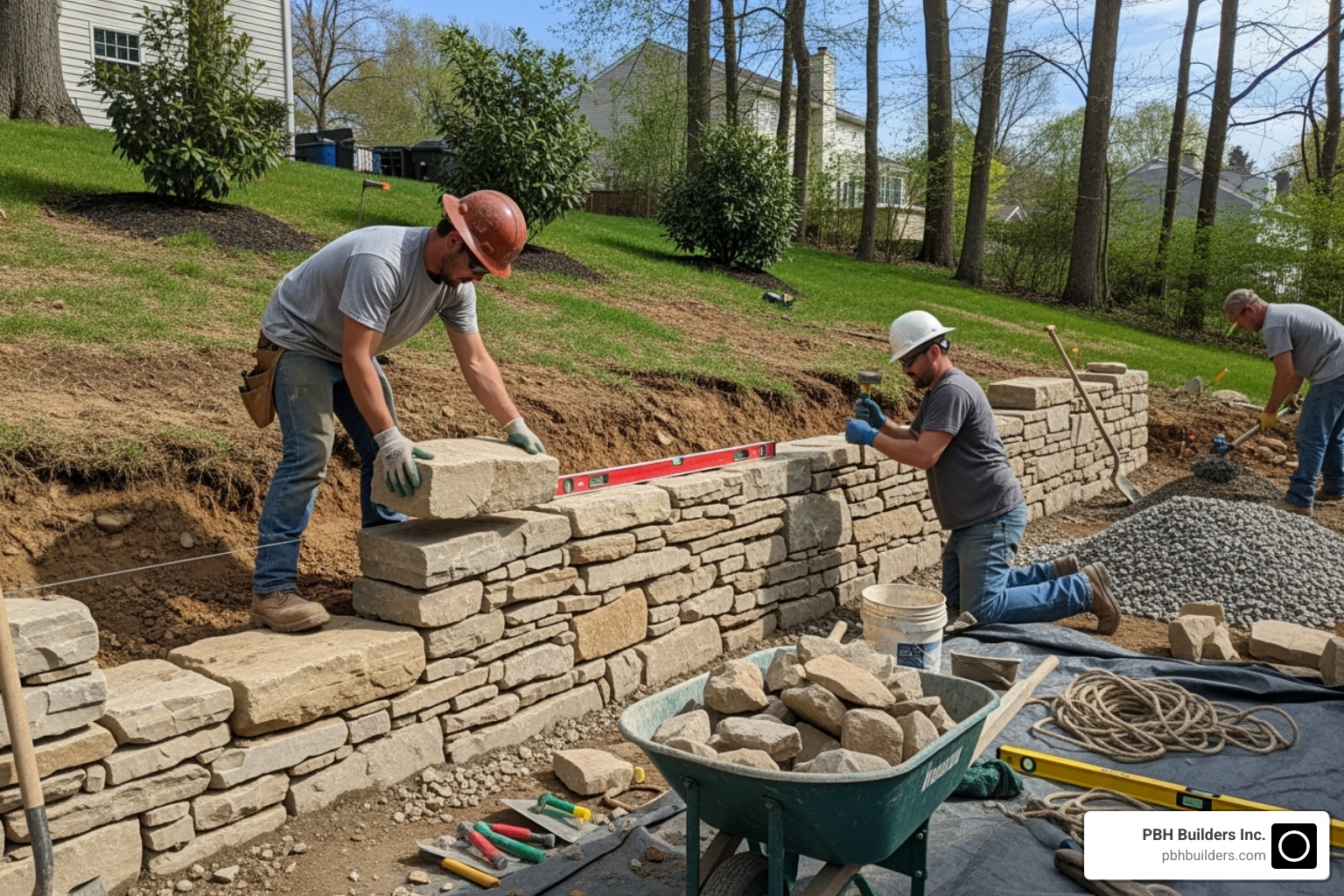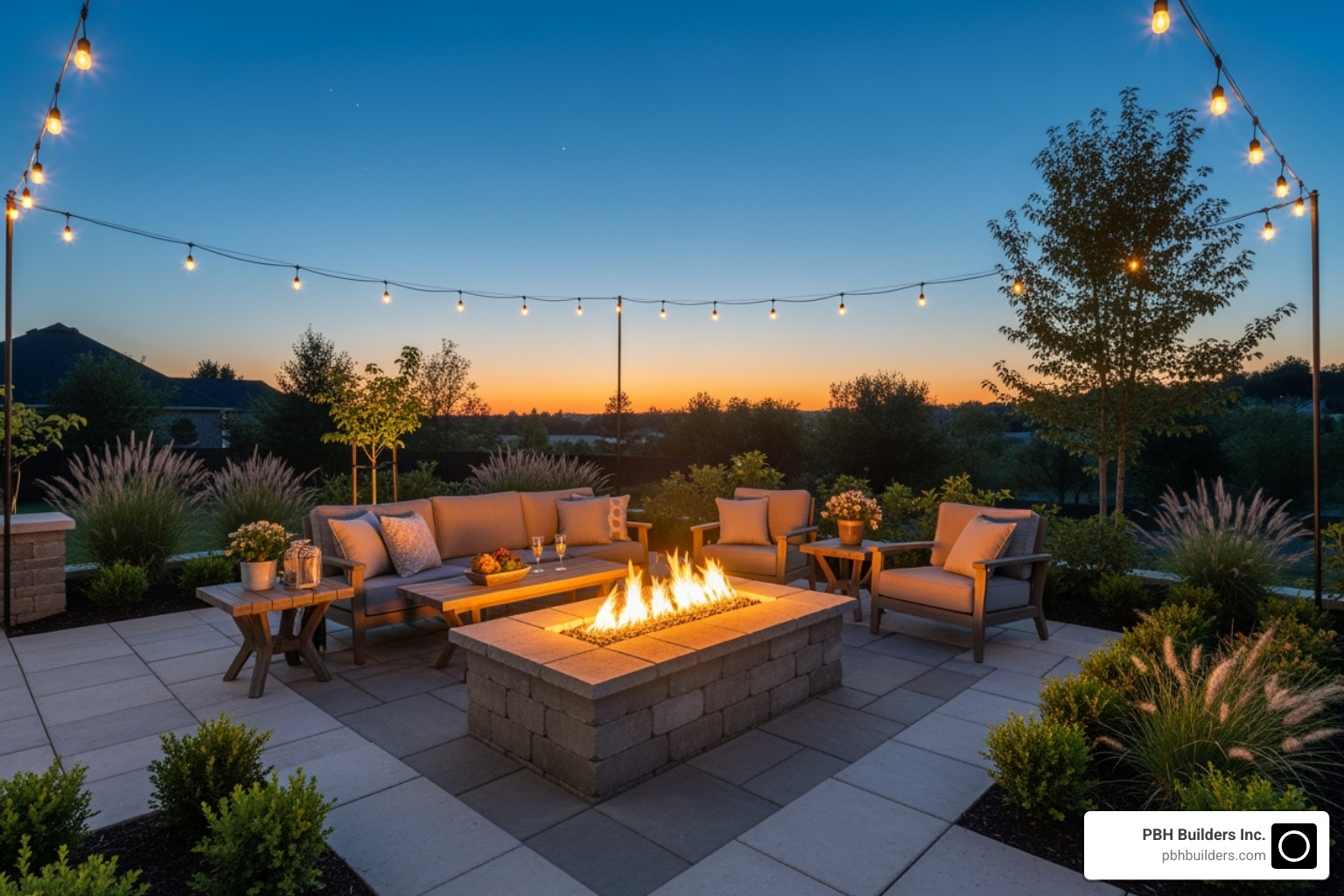Finding the Right Wood Retaining Wall Contractor for Your Project
Wood retaining wall contractors near me can transform a sloped yard into usable space and prevent soil erosion. Whether you need to stabilize a hillside or create terraced gardens, hiring the right professional is key.
Quick Answer: How to Find Wood Retaining Wall Contractors Near You
- Search locally: Use online directories, Google reviews, and local associations.
- Verify credentials: Check for proper licenses, insurance, and specific experience.
- Get multiple quotes: Compare at least 3 bids for materials, labor, and timeline.
- Check portfolios: Review past wood retaining wall projects and ask for references.
- Ask key questions: Inquire about permits, drainage, and project supervision.
Wood retaining walls blend functionality with natural beauty. They cost around $80 per linear foot installed, making them more affordable than concrete or stone. A properly built wall can last 5 to 20 years, depending on the wood and maintenance.
Success depends on contractors who understand local soil, permits, and drainage. Since many areas require permits for walls over 3-4 feet tall, an experienced contractor who manages this process is invaluable. The right professional can turn a hazardous, rotting wall into a stunning and safe landscape feature.
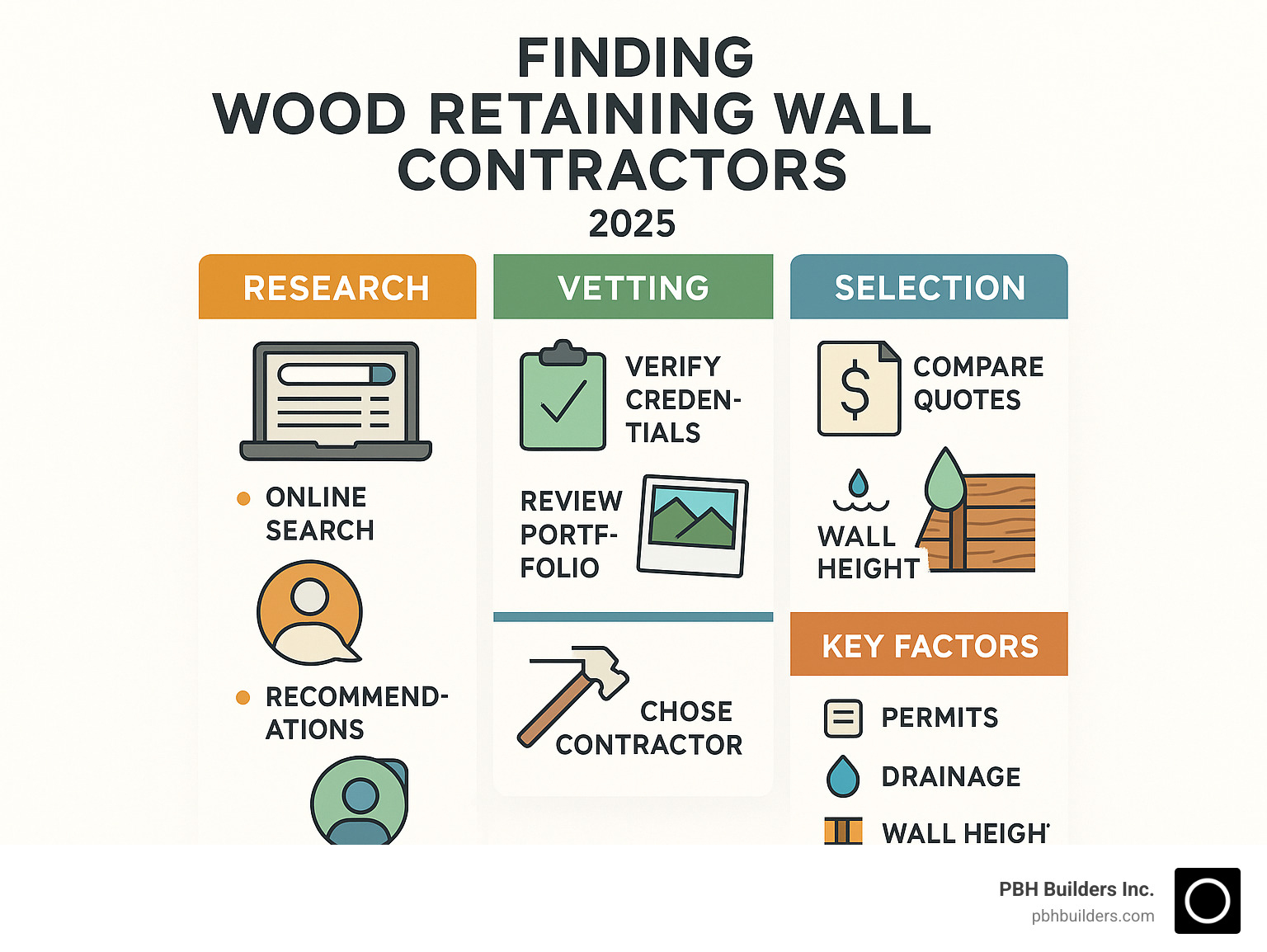
Why Choose a Wood Retaining Wall for Your Landscape?
Wood retaining walls offer a unique combination of aesthetic appeal and practical function, changing challenging slopes into beautiful, usable areas.
- Natural Aesthetic: Wood provides a warm, rustic charm that blends seamlessly with any landscape design, from cottage gardens to modern outdoor living spaces.
- Cost-Effective: Compared to stone or concrete, wood is often a more budget-friendly solution. Installation is also typically faster, meaning less disruption to your yard.
- Design Versatility: Wood can be easily cut and shaped to create straight lines or gentle curves, allowing for a high degree of customization for terraced gardens or defined landscape areas.
For more details on our approach, explore our Retaining Walls Services.
Best Types of Wood for Durability and Style
Choosing the right wood is critical for a retaining wall’s longevity, as it will be in constant contact with soil and moisture. We recommend wood known for its resistance to rot and pests.
Pressure-treated lumber is the most common and cost-effective choice. It’s infused with preservatives to protect against moisture and decay. For ground-contact use, it’s crucial to select lumber with a .40 retention level rating or higher, which indicates a greater amount of preservative for better protection.
Other excellent, naturally resistant options include:
- Cedar: Contains natural oils that repel insects and resist decay. It offers a beautiful color that weathers gracefully but is more expensive than treated pine.
- Redwood: Similar to cedar, redwood is naturally durable and resistant to rot and insects. Its striking reddish hue makes it a premium choice for a long-lasting, stunning wall.
We advise against using railroad ties. They are often treated with creosote, a messy substance that can be harmful to soil and plants, and they are extremely heavy and difficult to work with.
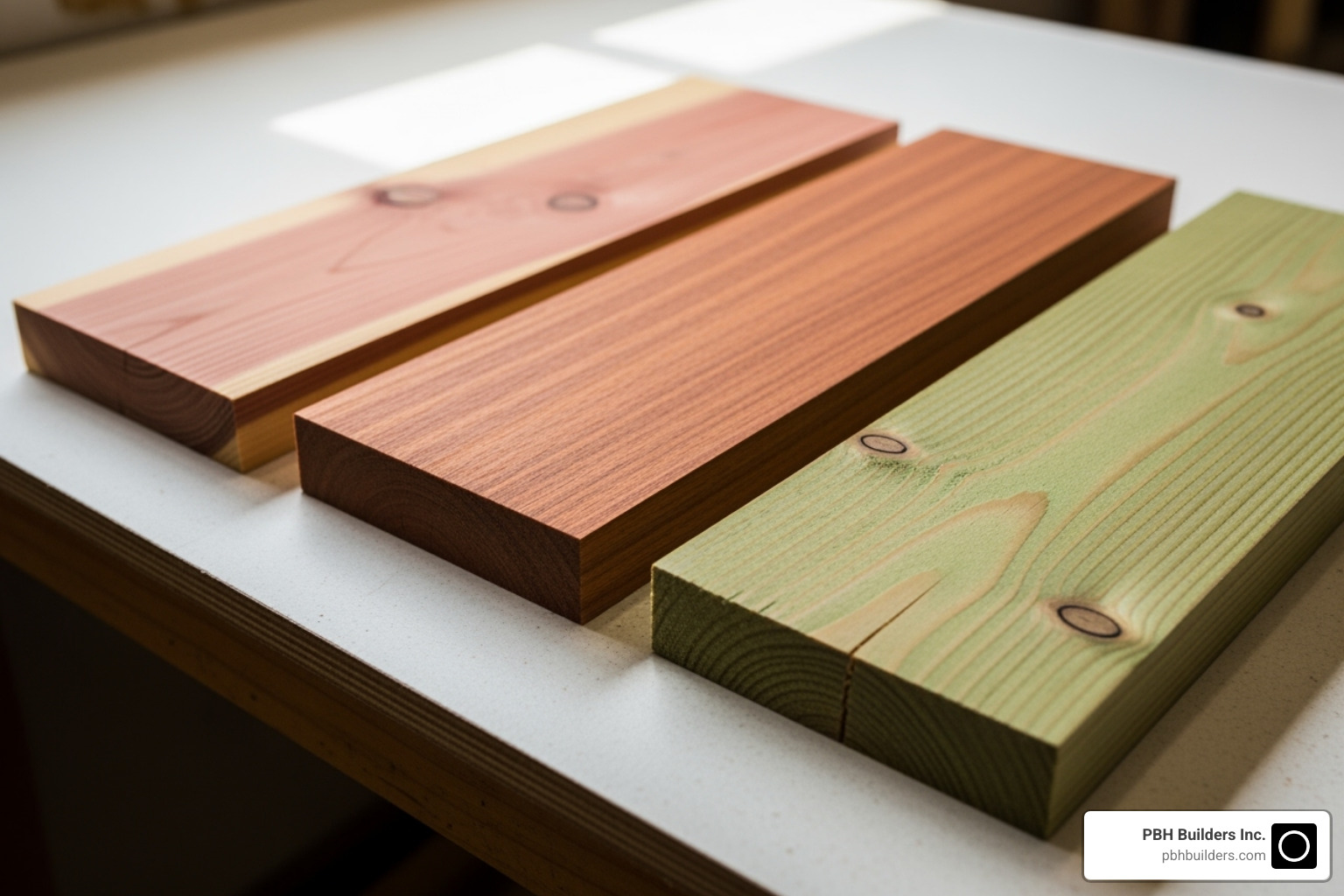
Integrating Your Wall with Other Landscape Features
A wood retaining wall can be much more than a structural element; it can be integrated creatively into your overall landscape design.
Here are a few integration ideas:
- Terraced Gardens: Create beautiful, multi-level garden beds on sloped yards, making them more accessible and visually dynamic.
- Built-in Seating: Design the top of a lower wall to serve as built-in bench seating around a fire pit or patio.
- Defining Patios and Walkways: Use wood walls as natural borders for patios and paths, adding definition and subtle elevation changes.
- Water Features: A wall can serve as a backdrop for a small waterfall or stream.
- Outdoor Lighting: Install LED lighting along the wall to highlight its texture and create a warm evening ambiance.
- Raised Planter Beds: Construct dedicated raised planters for gardening.
Our team specializes in comprehensive Landscape Design Services to create a fully integrated outdoor oasis.
Planning Your Wood Retaining Wall Project
Careful planning is the foundation of a successful wood retaining wall project. Key considerations include your project’s scope, site conditions, and budget.
- Project Scope: Determine if you need a small decorative wall or a large structural one to manage a slope. The scale influences materials, labor, and cost.
- Site Conditions: We analyze soil type (sandy, clay, etc.) and property slope, as these affect drainage and stability. Steeper slopes may require additional engineering.
- Budgeting: We help you make informed decisions about materials and design that align with your budget without compromising quality.
Here’s a comparison of wood versus concrete block retaining walls:
| Feature | Wood Retaining Walls | Concrete Block Retaining Walls |
|---|---|---|
| Aesthetic | Natural, rustic, can be stained/painted. | Modern, versatile colors/textures, can mimic stone. |
| Typical Cost | ~$80/linear foot (1′ height); more affordable upfront. | Can be more expensive than wood, but offers long-term value. |
| Lifespan | 5-20 years with proper maintenance. | 50-100 years with proper installation. |
| Maintenance | Requires sealing/staining every 2-3 years. | Very low maintenance; occasional cleaning. |
| Durability | Good, but susceptible to rot/insects if not maintained. | Excellent; highly resistant to weather, rot, and pests. |
| Installation | Generally quicker for smaller walls. | Can be more labor-intensive, especially for taller walls. |
| Environmental | Can be sustainably sourced; treated wood has concerns. | Manufacturing is energy-intensive; blocks can often be reused. |
Understanding the Costs: Materials and Labor
The cost of a wood retaining wall is influenced by materials, labor, and project complexity. As a guideline, expect around $80/linear foot for a 1′ height, including materials and labor.
- Material Costs: Pressure-treated lumber is the most budget-friendly, while cedar or redwood costs more. Wall size directly impacts material quantity.
- Labor Costs: Labor typically ranges from $35-$65 per linear foot, covering site prep, excavation, installation, and backfill.
Other factors affecting the total cost include wall height/length, site accessibility, soil conditions, drainage needs, and design complexity (e.g., curves vs. straight lines).
Navigating Permits and Local Regulations
Building a retaining wall involves safety and compliance with local regulations. Most jurisdictions, including San Diego, require permits for walls above a certain height, often 3-4 feet. These rules ensure structural integrity.
Key considerations include:
- Permit Requirements: We confirm the specific height threshold and rules for your property.
- Property Lines: We ensure the wall is built within your property boundaries.
- Local Building Codes: Codes dictate foundation depth, drainage, and materials. We are well-versed in local building codes to ensure compliance.
- Engineering Needs: Taller or complex walls may require an engineer’s stamp to verify the design is structurally sound. We coordinate this when necessary.
Ignoring permits can lead to fines or demolition orders. A knowledgeable contractor handles this process for you.
How to Find and Vet Reliable Wood Retaining Wall Contractors Near Me
Finding the right wood retaining wall contractors near me is manageable with a systematic approach. To find a trustworthy team, start with online searches for local companies, ask for recommendations from friends and neighbors, and check online reviews.
Once you have a shortlist, get at least three quotes to compare pricing and timelines. To see examples of our quality craftsmanship, browse our Projects with Retaining Walls.
Key Questions to Ask Potential Wood Retaining Wall Contractors Near Me
Asking the right questions helps you gauge a contractor’s expertise and process. Here are some essential questions:
- “What is your experience specifically with wood retaining walls?” Wood requires specialized knowledge different from concrete or stone.
- “Do you handle the permit application process?” A reliable contractor should manage or assist with obtaining necessary permits.
- “What is your process for ensuring proper drainage?” This is critical for the wall’s longevity. Listen for details on gravel backfill and drainage pipes.
- “Can I see a portfolio and speak to past clients?” Visual proof and references offer insight into their work quality and professionalism.
- “What is the estimated project timeline?” A clear timeline helps set expectations.
- “Who will be the on-site supervisor?” Knowing who is accountable is crucial for communication.
- “What is your warranty on labor and materials?” A reputable contractor will stand behind their work.
Verifying Credentials: Licenses, Insurance, and Portfolios
Verifying credentials is a critical step to protect yourself and your property. Ensure any contractor you consider has:
- A valid state contractor license: This shows they meet state standards for experience and knowledge. You can typically verify this online.
- Proper Insurance: Ask for proof of both liability insurance (to cover property damage) and worker’s compensation insurance (to cover worker injuries on your property). Without worker’s comp, you could be held liable.
Finally, review their portfolio for quality workmanship on projects similar to yours and always check references to confirm their reliability and communication skills.
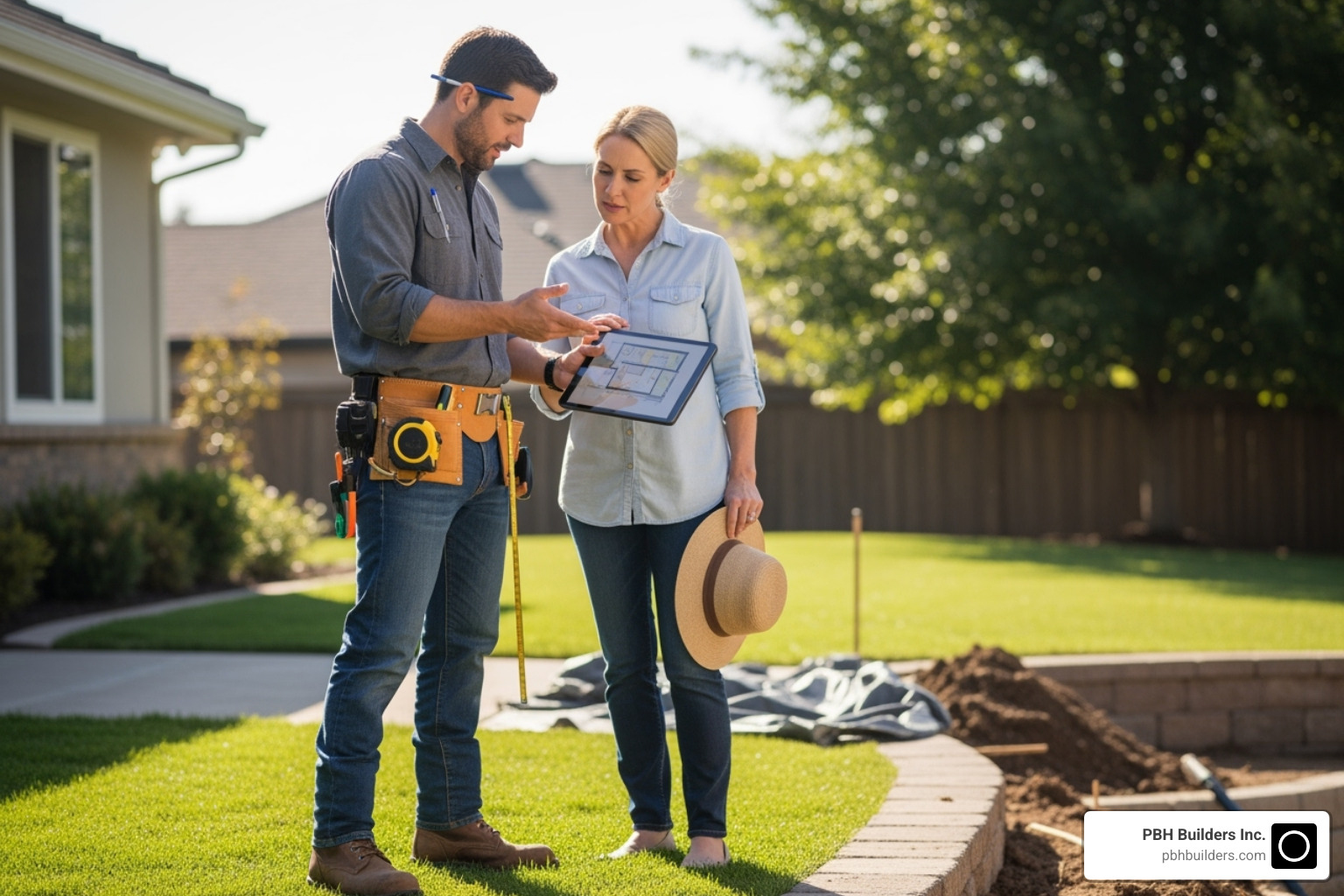
The Construction Process and Ensuring Longevity
Professional installation by experienced wood retaining wall contractors near me is key to a beautiful and long-lasting wall. The process involves several meticulous steps.
It begins with site preparation and foundation excavation, where a trench is dug and filled with a gravel base to create a stable, level footing. Timbers are then installed in interlocking courses, fastened with heavy-duty spikes. For taller walls, “deadmen” (tiebacks) are used to anchor the wall into the hillside, ensuring stability. The process concludes with a thorough cleanup, leaving your property ready to enjoy.
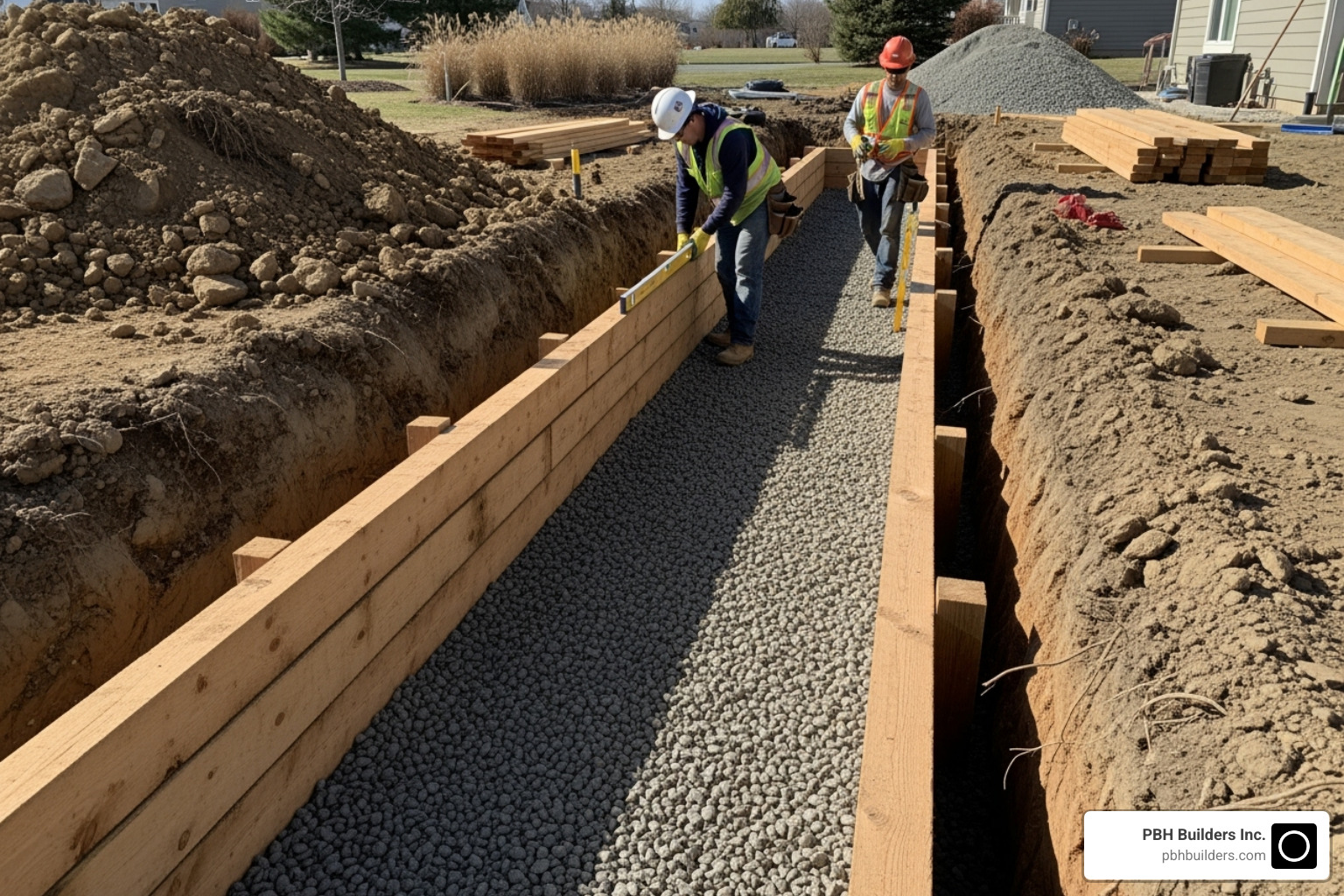
How Professionals Ensure Wall Stability and Longevity
Wall stability relies on key engineering principles and skilled craftsmanship:
- Proper Foundation: The first course of timbers is set in a well-prepared trench on a gravel base for a stable footing.
- Anchoring with Deadmen: For walls over a few feet tall, tiebacks are buried in the hillside and connected to the wall to resist soil pressure.
- Backfill Material: Free-draining gravel is used as backfill to reduce water pressure against the wall.
- Ensuring Proper Drainage: This is the most critical factor. Water accumulation can cause a wall to fail. Professional solutions include gravel backfill, perforated drain pipes (French drains) at the wall’s base, and geotextile fabric to prevent clogging. Implementing proper drainage is non-negotiable for a long-lasting wall.
Lifespan, Maintenance, and Signs of Failure
The typical lifespan of a wood retaining wall is 5 to 20 years, depending on the wood type, environmental conditions, and quality of installation.
To maximize its life, regular maintenance is crucial. This includes sealing and staining every 2 to 3 years to protect the wood from moisture and UV damage. Regular inspections for rot or insect activity are also recommended.
Be aware of these signs that a wall needs replacement:
- Leaning or Bowing: A wall bulging or leaning more than 2 inches is a sign of structural failure.
- Rot or Insect Damage: Soft spots, crumbling wood, or visible insect tunnels compromise the wall’s integrity.
- Age: Walls over 20 years old should be professionally inspected, as they may be structurally fatigued or no longer meet building codes.
- Erosion: Soil washing out from behind or beneath the wall indicates a drainage or structural problem.
- Gaps: Large or widening gaps between timbers signal instability.
Frequently Asked Questions about Wood Retaining Walls
Here are answers to some common questions about wood retaining walls.
What’s the difference between a retaining wall and a landscape wall?
A retaining wall is a structural feature engineered to hold back soil on a slope. It requires a proper foundation, drainage, and often a permit. A landscape wall is typically shorter, primarily decorative, and used to define garden beds or pathways without bearing a significant structural load.
Can a wood retaining wall be built on a slope?
Yes, that is one of their primary functions. Wood retaining walls are an excellent solution for managing slopes by creating level terraces for gardens or patios and preventing soil erosion. However, building on a slope requires expert installation by experienced wood retaining wall contractors near me to ensure stability, proper anchoring, and adequate drainage.
What are the signs that an old wood retaining wall needs to be replaced?
Knowing the warning signs can help you address issues before they become major safety hazards. Key indicators that your wall needs replacement include:
- Significant Leaning or Bowing: A wall bulging or leaning more than 2 inches is a clear sign of structural failure.
- Widespread Rot or Insect Damage: Soft, crumbling wood compromises the wall’s strength.
- Age (Over 20 Years Old): The wall may be structurally fatigued and no longer meet current safety codes.
- Poor Drainage or Erosion: Water pooling behind the wall or soil washing out from underneath are signs of failure.
- Large Gaps Between Timbers: This indicates the wall is shifting and unstable.
Transform Your Landscape with an Expertly Built Wall
Wood retaining walls offer a cost-effective and beautiful solution to outdoor challenges, from managing slopes to creating usable garden space. As we’ve covered, success lies in choosing the right materials, proper planning, and professional installation that prioritizes drainage and stability.
A well-built wood retaining wall is an investment that improves the beauty, function, and value of your property. With a lifespan of 5 to 20 years, proper maintenance is key, as is knowing the signs of failure—like leaning, rot, or bowing—that indicate it’s time for a replacement.
At PBH Builders Inc., we specialize in landscape design and hardscaping services in San Diego. Our team creates captivating outdoor environments custom to our clients’ visions, focusing on creativity and meticulous attention to detail to improve your property and lifestyle.
Your search for expert wood retaining wall contractors near me ends here. Contact us for your retaining wall project today, and let’s build something beautiful together!

